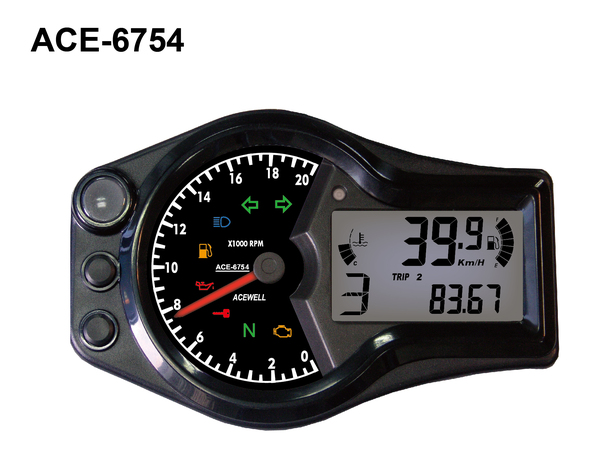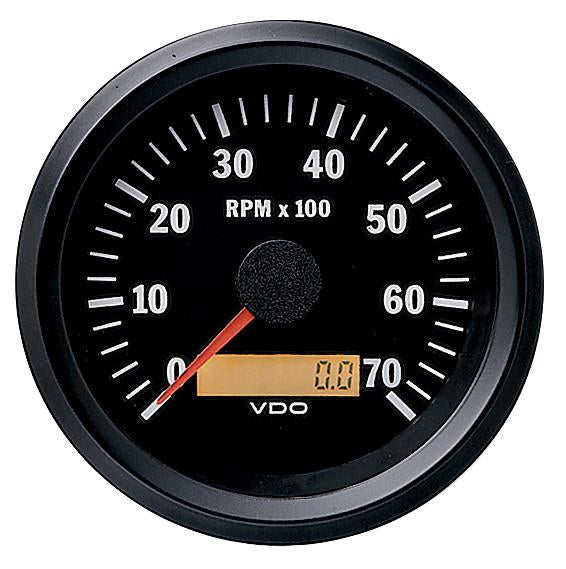Comprehensive Guide to Comprehending and Utilizing a Tachometer Effectively
Comprehensive Guide to Comprehending and Utilizing a Tachometer Effectively
Blog Article
Checking Out the Functions and Advantages of a Tachometer: A Comprehensive Overview for Auto Fanatics
In the world of automobile instrumentation, the tachometer stands as a necessary tool that provides drivers valuable insights right into their vehicle's efficiency. tachometer. From supplying real-time information on engine speed to aiding in maximizing gear shifts, the tachometer serves as more than just a dial on the control panel. Its complex features not just boost driving experience yet additionally play a pivotal duty in preserving engine wellness and efficiency. As we explore the intricate operations and benefits of a tachometer, a much deeper understanding of its significance for car enthusiasts and experts alike will unravel.
Comprehending the Fundamentals of a Tachometer
In the world of vehicle instrumentation, recognizing the basics of a tachometer is necessary for any auto fanatic looking to dive right into the details of engine efficiency tracking. A tachometer, usually presented on the control panel of a car, gauges the engine's transformations per min (RPM)
Tachometers generally have a range marked in transformations per minute, with a redline showing the optimum speed at which the engine can securely run (tachometer). This details is vital for avoiding engine damage and maximizing gear shifting for manual transmissions. Furthermore, tachometers can help in identifying engine issues such as misfires or a falling short ignition system by detecting uneven RPM analyses
Significance of Monitoring Engine Speed

Checking engine speed is a crucial aspect of automobile upkeep and performance optimization for automotive fanatics and experts alike. The engine speed, gauged in revolutions per minute (RPM), indicates exactly how fast the engine's crankshaft is revolving. By maintaining a close eye on the RPM, chauffeurs can guarantee that the engine is operating within the optimal range, stopping possible damages from over-revving or delaying. Keeping track of engine speed is especially crucial during equipment shifts, as it helps drivers figure out the ideal time to change gears for smooth velocity and reliable fuel consumption.
Additionally, tracking engine rate can also provide beneficial insights into the total health of the lorry. In general, keeping track of engine rate with a tachometer is a basic method that can enhance driving performance, extend engine life, and make certain a safer and extra delightful driving experience.
Enhancing Performance Through Equipment Shifts
Maximizing performance through tactical gear shifts is an essential facet of maximizing a car's performance and power result. Appropriate equipment moving makes sure that the engine runs within its ideal power band, permitting smooth velocity and improved fuel economy. When changing equipments, it is crucial to take note of the engine rate suggested on the tachometer. By keeping track of the engine revolutions per min (RPM), chauffeurs can determine one of the a fantastic read most appropriate minutes to upshift or downshift for ideal efficiency.

To achieve peak performance with gear changes, motorists need to practice smooth and timely transitions in between equipments, matching engine rate with roadway rate to harness the full capacity of their lorry's powertrain.
Maximizing Effectiveness With a Tachometer
Understanding the art of equipment shifting in high-performance vehicles not only improves driving experience however additionally plays an important function in making best use of performance with a tachometer. tachometer. By paying attention to the tachometer readings, drivers can enhance their equipment changes to run within the engine's most reliable array. When speeding up, moving gears at the best RPM indicated by the tachometer can prevent the engine from overworking or underperforming, resulting in improved fuel performance and total efficiency
Furthermore, a tachometer helps drivers stay clear of unneeded revving, which not only wastes gas however also places unneeded strain on the engine. Consistently monitoring the tachometer while driving permits smoother gear transitions, lowering deterioration on the transmission i loved this system in time.

Advanced Tips for Tachometer Application
To dig into advanced tips for tachometer utilization, consider incorporating the use of change lights. Change lights are aesthetic signs that light up when it's time to move gears based on engine revolutions per min (RPM), permitting for smooth gear modifications without continuously keeping track of the tachometer. By fine-tuning shift points and setting cautioning thresholds, drivers can optimize acceleration and engine efficiency while lessening the risk of over-revving.
Conclusion
In verdict, the tachometer works as an important tool for car fanatics to keep an eye on engine speed, enhance efficiency with gear changes, and make the most of efficiency. By recognizing the features and benefits of a tachometer, vehicle drivers can maximize their driving experience and extend the lifespan of their automobile. Utilizing innovative ideas for tachometer usage can better enhance driving skills and general performance when driving.
Report this page